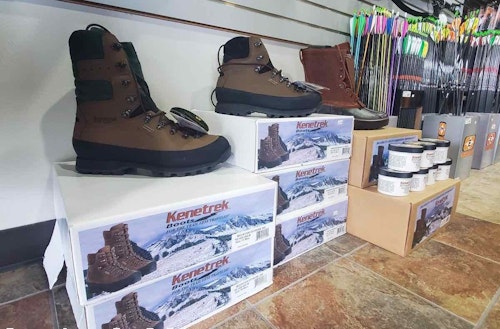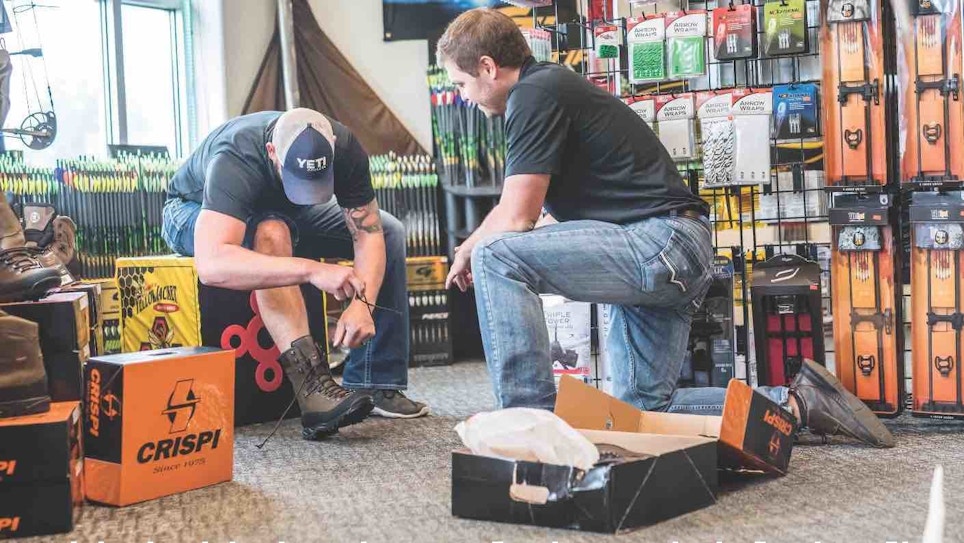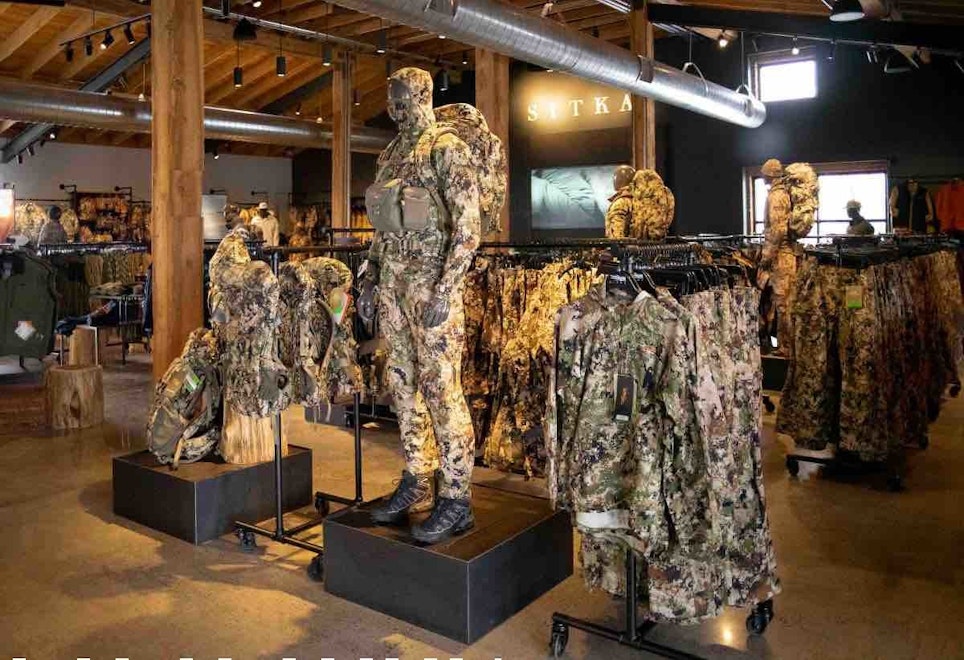In a convenience-driven world, a lot can be said of a legitimate one-stop shop where customers can purchase everything needed for a given activity. Take fishing, for example. A fishing store looking to completely outfit fishermen/women doesn’t stop with bait, tackle and fishing rods. No, they offer snacks, drinks, coolers, sunscreen, polarized sunglasses, fishing licenses, fishing apparel and life vests. The list goes on. They offer such an expansive selection for two reasons. First, it’s convenient; it saves customers the headaches of another stop. Number two, they capitalize on more sales because they have products customers are going to purchase anyway.
As an archery retailer, it’s difficult deciding how far to expand beyond bows, arrows and accessories. On one hand, you want to sell your customers everything they want to buy for the bowhunting experience. On the other hand, you don’t want to end the year with a bunch of leftover inventory. And that’s a legitimate concern because box-store competitors usually offer mountains of hunting equipment ranging from boots to grunt calls. Not only that, but they generally offer better pricing because they have greater buying power.
But, don’t let competition hinder you from tapping into extra product categories, especially if you’ve identified some that make sense to have on your shelves. I understand that getting into multiple product categories has risks, but to be great at something involves taking smart risks. In this context, that means settling on product categories you don’t currently offer but your customers are buying elsewhere.
With this in mind, three categories you might consider — if you aren’t currently selling them — are boots, apparel and scent-control products. Along with a couple of current archery dealers, let’s explore some ins and outs of each category so you can decide if bringing them into your store is the right move.
Boots
Footwear is a difficult category to enter — boots are sold practically everywhere. Even though many mainstream sporting goods and farm supply stores, not to mention online and big-box stores, sell boots, remember this: Bowhunters need boots. By selling archery equipment, you’re drawing bowhunters — an audience that needs boots — into your store. Put boots on your shelves, and you’ll have product in front of them that they’d be buying elsewhere anyway.
Don’t confuse my point. It doesn’t mean boots will fly off your shelves. It simply means you’re not trying to sell golf clubs at a motorcycle dealership. Offering boots to bowhunters makes sense. Because competition is strong, use discretion and don’t dive in headfirst.
This is the approach Joel Wilson of Central Coast Archery in San Luis Obispo, California, said his family’s small archery shop is taking.
“We’re at the stage where we’ve contacted a boot manufacturer we’d like to bring in and are waiting to hear back from them,” Wilson said. “We really pay attention to our customers and listen to what they want in terms of product, so we’re going after Crispi. If it works out to bring them in, it will be our only boot line, and since it’s a high-end brand, we believe it will set us apart from the majority of other stores that sell boots.”
Drew Nielsen of Anthem Archery in Iowa also shared some footwear input.
“Boots are primarily a special order deal for us,” he said, “but we keep some Kenetrek Boots on hand. We’re starting to sell quite a few pairs. They make a good crossover boot for my customers who take one western hunt and then hunt the rest of the season here locally. I carry some insulated and some uninsulated boots. I keep only a dozen pairs on hand at a time because boots are even more difficult to sell than clothing. But, they’re worth having. My best suggestion is to sell a higher-end brand that folks can’t buy just anywhere. It works for me.”

Apparel
With apparel, there are so many brands, styles and patterns from which to choose. That alone is perplexing. And, like boots, apparel is available practically everywhere. If you have a smaller store and apparel would be a new category for you, identify a specialty brand that people can’t buy anywhere else in your town, then bring a reasonable number of garments in and see how it goes.
“For the last 7 years, we’ve been carrying Sitka Gear,” Wilson said. “Since it’s a premium apparel brand, it pairs well with our high-end consumers. If a customer buys a high-end bow, he or she sees the value in spending more money in exchange for a better product. That same customer is likely to spend more on camo. Plus, our customers typically buy what we recommend and what we use ourselves, so offering Sitka Gear has been good for us since we use it and believe in it.
“Of the patterns available, Subalpine is the most popular for local hunting and even out-of-state hunting. Sitka Gear offers apparel systems, so we’re able to walk our customer over to the display and really break everything down and pair him or her with a system that meets their individual needs. We’re also mindful of our geographic location. Unlike the Midwest, California’s deer season opens in July when temperatures are very hot — sometimes above 100°F. So, we tend to stock a lot of baselayer garments and also mid-weight garments. Selling it as a system makes it really easy for both us and the customer.”
Once you settle on a brand, sizing is another obvious challenge and involves some trial and error.
“Now that we’ve been selling Sitka Gear for several years, we’ve learned what sizes are most popular for our customer demographic,” Wilson said. “For shirts and jackets, large and XL are the most popular, so we stock more garments in those sizes and stock sparingly in the small and medium sizes. For pants, popular waist sizes are 32 to 36.”
Nielsen shared similar observations regarding sizing based on his apparel-selling experience.
“Small and XXL or larger are the least popular sizes,” he said. “So, I carry low amounts of those sizes. I can always special-order them, if needed. My average customers range from medium to XL, so having those three sizes on hand at all times is very important. Even with those sizes, though, I’m fairly conservative, because no matter what, there’ll always be lots of competition. I keep what I can stocked, and I stay on top of orders so that I can fulfill my customers’ needs very quickly.”
In the past, Nielsen said that apparel has been somewhat hit or miss for Anthem Archery. But, he expects that an upcoming change he’s making will turn the tables.
“In 2019 and 2020, we carried a lower-end apparel brand similar to what folks can buy at most sporting goods stores,” he said. “Based on performance, we’re going to make a change and transition into offering higher-end apparel from Pnuma. The idea is to offer something different than what consumers can buy elsewhere. That, we believe, will set us apart from the competition. The transition from big-box quality apparel to more technical, specialty apparel will be a positive move.
“That being said, I’m planning not to entirely phase out the less-expensive camo. I think it’s somewhat important to have something for beginner bowhunters who aren’t spending a pile of money to get started. But, I’ll offer a lot less of it and focus more on the high-end Pnuma gear. I do that with most of my archery equipment, too. I want my customers to feel like they’re in a pro shop, not a small version of a box store.
“Not only is high-end camo a good fit for an archery shop, but I believe Pnuma, in particular, will benefit my customers based purely on geographic location. The brand has early season and late-season whitetail systems. It also has Heated Core garments designed to keep hunters warm in cold conditions with fewer layers and bulk. Iowa certainly sees cold temperatures during the rut and late season, so I believe my customers will see the benefit in this more technical apparel. I’m really excited about it.
“When ordering, I’ve learned that you must pay attention to the main times people hunt. Here in Iowa, it’s during the early fall and then later when the weather is cold from November into January. If I have jackets, pants and baselayers that are designed for those key times, I’m minimizing my risk.”
Scent-Control Products
This will never be a bread-and-butter category, but it’s one that your serious bowhunting customers will buy. Rather than try to carry every brand backed by fancy marketing, go all in on one brand that you believe in. Even then, draw a line in the sand so you don’t overbuy.
Wilson shared how his market is different for scent-control products than most markets be-cause California is known for black-tailed deer, not whitetails.
“Most of our customers are spot-and-stalk hunters, and they play the wind,” he said. “That being said, we have some customers who have access to private land and hunt from treestands, so we do sell some scent-control products, but they aren’t wildly popular.
“We handle Dead Down Wind products. The sprays are pretty easy to sell. We also sell a decent amount of laundry soap to customers looking to freshen up their apparel prior to hunting season. Again, it isn’t a huge product category for us, but it’s still worthwhile for sure.”
Nielsen says Anthem Archery has seen a shift in interest within the scent-control category.
“Soaps and field sprays have handed the spotlight over to ozone generators,” he said. “I believe some of that has to do with marketing and social media. However, my customers who are really serious about deer hunting still do the complete system with the laundry detergent, soaps and field spray.
“Cover scents are now really popular here. Our bestseller is the EverCalm cover scent by Conquest Scents. A lot of hunters are seeing its benefits. We sell a lot of it all year long.”

Final Thoughts
Bowhunters will buy boots, apparel and scent-control products, whether through you or another store. If you don’t stock these products, then you give your customers no choice but to buy them elsewhere.
I suggest giving these categories a whirl. Don’t get too big too fast. Enter at a modest level, put effort into marketing, and seize opportunities to tell your customers about your new offerings. And don’t go cheap; you’re a pro shop. Give your customers something different than what they can buy everywhere else.
Boots, apparel and scent-control products won’t fly off the shelves like they do at big-box stores, but with the right approach, I bet you’ll sell enough to make it worthwhile.







